Nairobi National Park, the world’s only national park situated within a capital city, is on the brink of an ecological crisis. Once a haven for endangered species like the black rhino, the park is now being suffocated by relentless urban sprawl, with nearly 80% of its wildlife forced to roam outside its boundaries.
The wildebeest population, once numbering 30,000 in the 1960s, has plummeted to a mere 200 today. Habitat loss, poaching, pollution, and invasive species are compounding the pressure on the park’s delicate ecosystems.
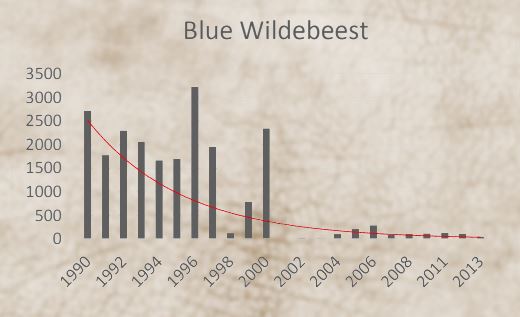
Invasive plants like Lantana camara are displacing vital grazing lands, while pollution from nearby industries is contaminating the park’s water sources. Additionally, lion predation on livestock has led to retaliatory killings, with 45% of lions’ home ranges now extending outside the park, where human-wildlife conflict is escalating.
The park is facing a survival battle, and without immediate intervention, these ten critical threats could devastate one of Africa’s most iconic wildlife sanctuaries, undermining its role in conservation, tourism, and education for future generations.
As outlined in the Nairobi National Park Management Plan 2020-2030, the park is grappling with ten critical threats that jeopardize its biodiversity and long-term sustainability. The following section delves into these pressing challenges, providing a detailed overview of the issues at hand.
Decline in Wildlife Population
Wildlife populations in NNP have faced severe declines, with 70-80% of the park’s animals typically roaming outside its protected boundaries. However, increasing development and the erection of fences have significantly limited their ability to disperse. This range compression has led to a decrease in biodiversity and increased competition for resources.
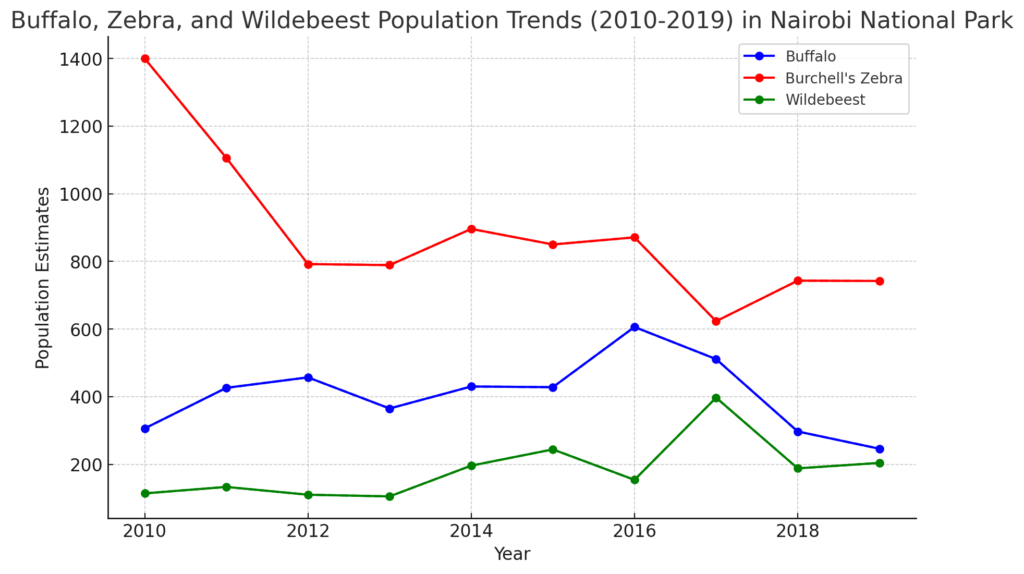
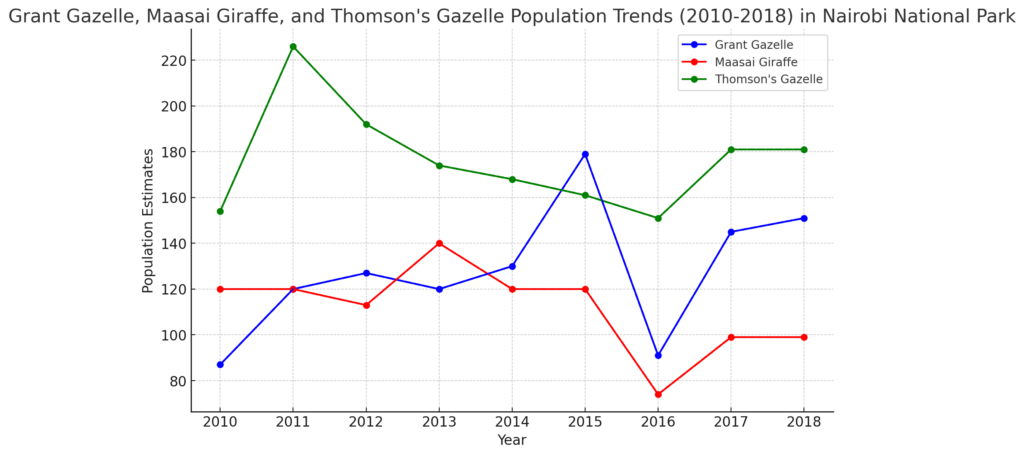
Wildlife Poaching

Poaching has become a growing problem, particularly in the park’s dispersal areas where human settlements are expanding. Species such as giraffes, zebras, and antelopes are frequently targeted, while occasional rhino poaching has occurred beyond the southern boundaries of the park, where human activity overlaps with wildlife ranges.
Human-Wildlife Conflict
Human-wildlife conflict has intensified as wildlife, especially lions, frequently leave the park to prey on livestock. A 2016 study revealed that 45% of lions’ home ranges extend outside the park, with livestock accounting for 15% of their diet. This has led to retaliation killings by locals and heightened tensions between wildlife and livestock.

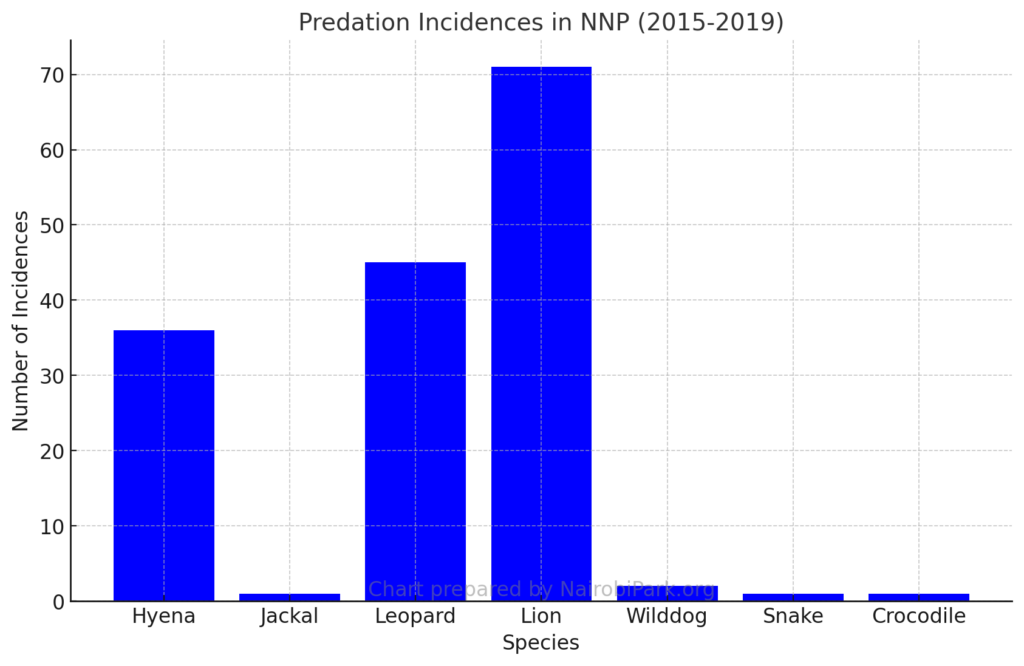
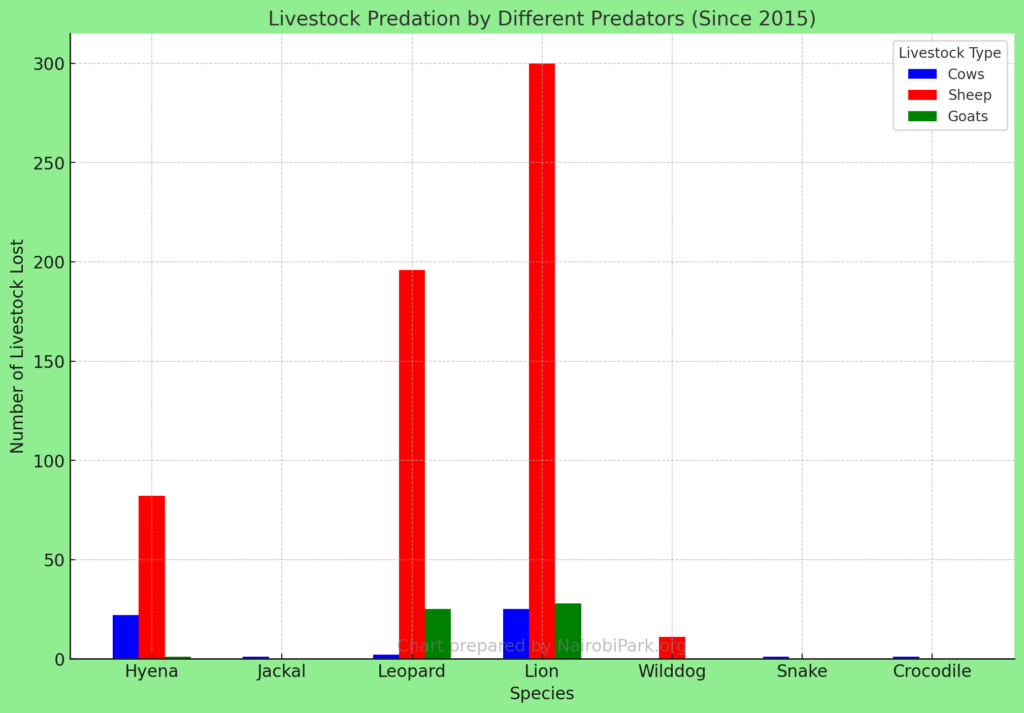

Invasive Species
Invasive species like Lantana camara and Parthenium hysterophorus are displacing native vegetation that herbivores rely on, further degrading the park’s ecosystem. These invasive plants have proliferated in disturbed areas, roadsides, and riverbanks, leading to significant habitat loss for grazing animals.
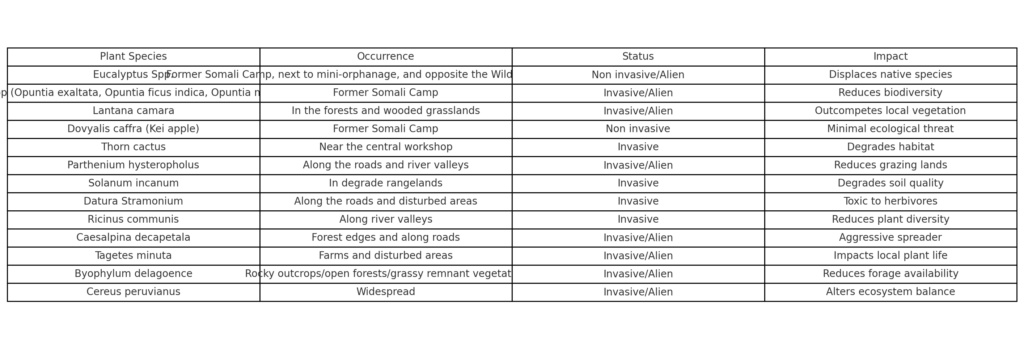
Habitat Loss and Fragmentation in Dispersal Areas;
Habitat loss and fragmentation in Nairobi National Park’s dispersal areas is one of the most pressing challenges threatening the park’s ecosystem. As Nairobi’s population continues to surge—expected to exceed 14.3 million by 2030—the pressures on surrounding land increase exponentially.
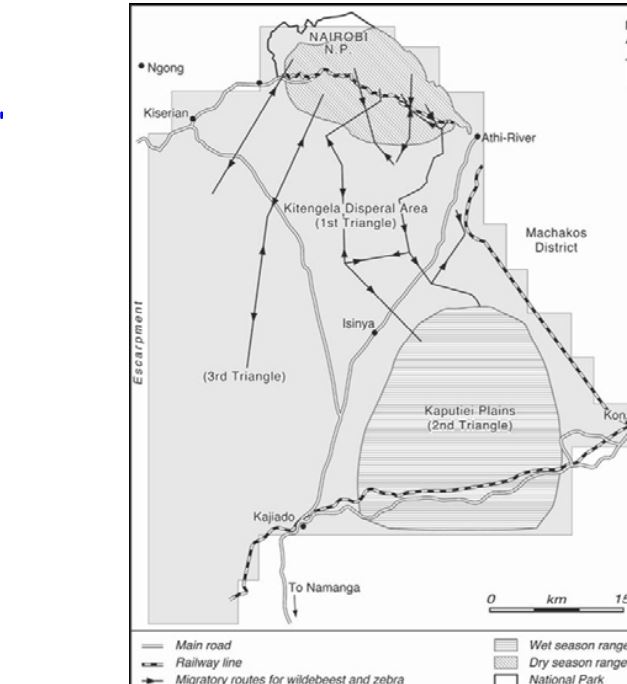
route for wildebeests and zebra, and the wet and dry season wildlife ranges. Credit: Mbatia Tereria.
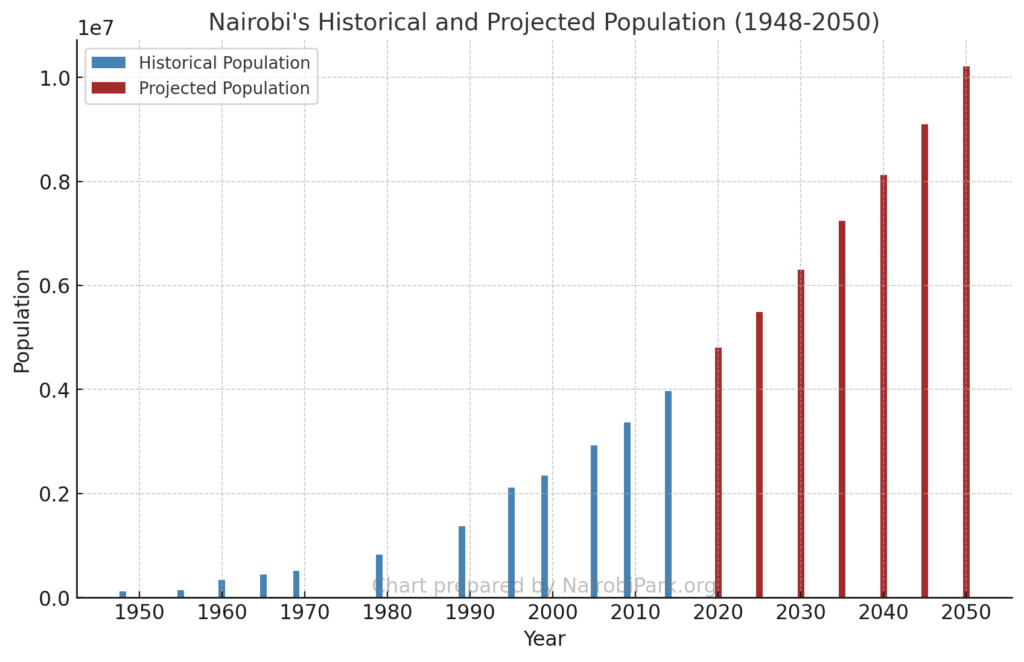
These dispersal areas, though not officially protected, are critical to the health of the park. The expansion of urban centers and unregulated subdivisions have created a patchwork of fences and residential developments, cutting off traditional wildlife migration routes. According to the World Wildlife Fund (WWF), habitat fragmentation severely affects animal migration and dispersal, which can lead to inbreeding and a reduced genetic pool, ultimately threatening species survival.
In the case of Nairobi National Park, this fragmentation has severely impacted migratory species like wildebeests, whose population has plummeted by over 90% since the 1960s. The construction of roads and fences has further obstructed their seasonal migration, leaving many species unable to access critical grazing lands and water sources beyond the park’s boundaries.
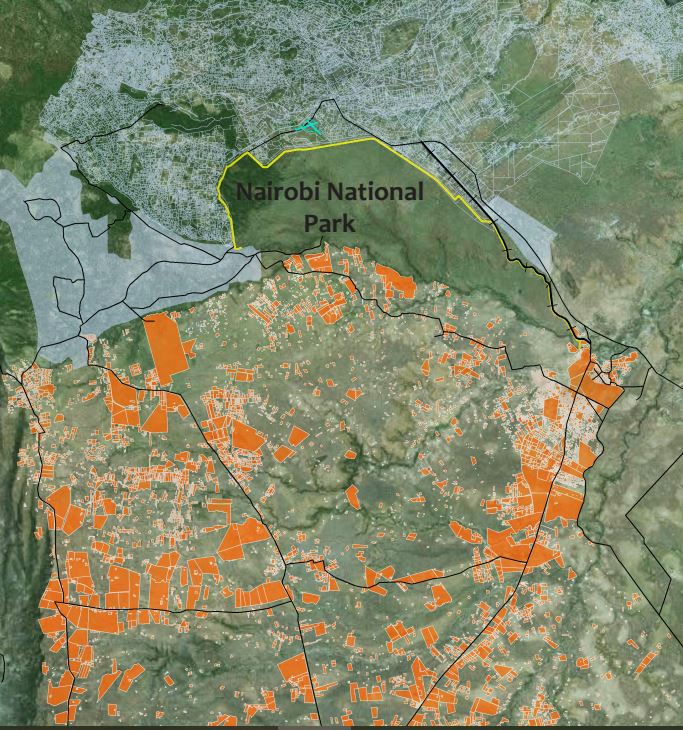
Kenya Wildlife Service (KWS) data indicates that 70-80% of the park’s wildlife relies on the dispersal areas for survival, especially during wet seasons when they migrate out of the park. As fences go up and roads expand, this movement is increasingly restricted, forcing animals into smaller areas, increasing the likelihood of human-wildlife conflict, and exacerbating competition for dwindling resources.
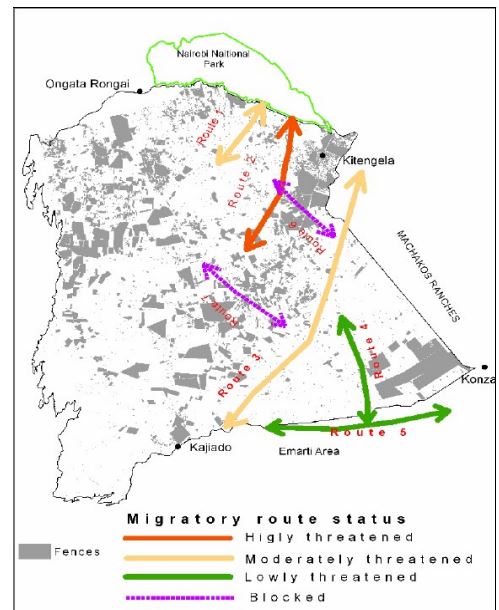
The issue is compounded by the permanent sale of land to non-residents who often have no vested interest in conservation. These landowners may fence off plots for speculation, further disrupting ecological corridors. While compensation programs and lease agreements have provided short-term solutions, the permanent fragmentation of habitats poses a long-term existential threat to the park.
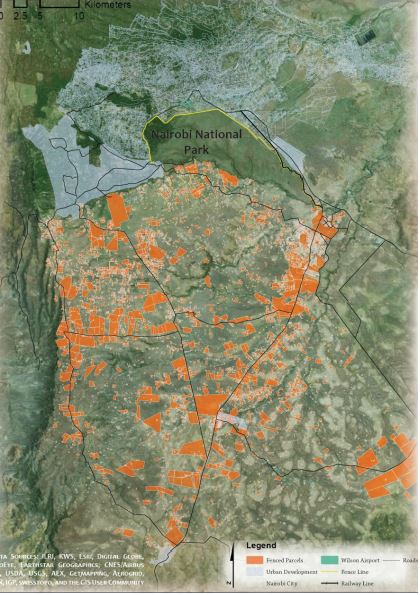
A study by the International Union for Conservation of Nature (IUCN) warns that without immediate intervention, the continued loss of dispersal areas could lead to the functional extinction of key migratory species within the park, transforming Nairobi National Park into an ecological island—cut off from the broader landscapes needed to sustain its biodiversity.
Pollution
Water pollution from untreated sewage in nearby areas, such as Ongata Rongai and Karen, contaminates key water sources, including the Mbagathi and Nagolomon dams. Additionally, air pollution from industries, particularly cement factories, and solid waste from urban areas negatively impact both the park’s environment and aesthetic value.
Mining and Quarrying
Mining and quarrying activities near the park generate noise pollution, heavy truck traffic, and habitat destruction, discouraging wildlife from occupying these areas. Abandoned quarries filled with water have created new conflict zones by attracting wildlife like hippos, increasing human-wildlife encounters and poaching risks.
Climate Change
Climate change poses both immediate and long-term threats to NNP. Increased rainfall has caused the park’s grasslands to grow taller, altering wildlife browsing behavior.
Conversely, droughts may exacerbate the spread of invasive species and lead to further habitat degradation, impacting the park’s resilience to environmental changes.
Park Visitation
Tourism, although vital to NNP’s financial sustainability, can negatively affect the environment. Off-road driving, littering, and inappropriate wildlife interactions disrupt natural behaviors.
Despite stagnation in non-resident visitor numbers, Kenyan citizens (who make up 61% of park visitors) offer a key target group for new tourism initiatives. However, nearby industrial and residential development has reduced the park’s aesthetic appeal.
Infrastructure Development
Major infrastructure projects, such as the Southern Bypass and the Standard Gauge Railway (SGR), have cut through parts of NNP, introducing noise, air pollution, and visual disruptions that strain the park’s already fragile ecosystem. Additional developments, including power pylons and pipelines, continue to compound these issues.
Conclusion
The NNP Management Plan 2020-2030 stresses the need for collaborative conservation efforts to address these challenges. Effective land-use planning, habitat restoration, and stricter regulations on infrastructure and pollution are essential to ensuring the preservation of Nairobi National Park’s unique ecological role amid growing urbanization pressures.
